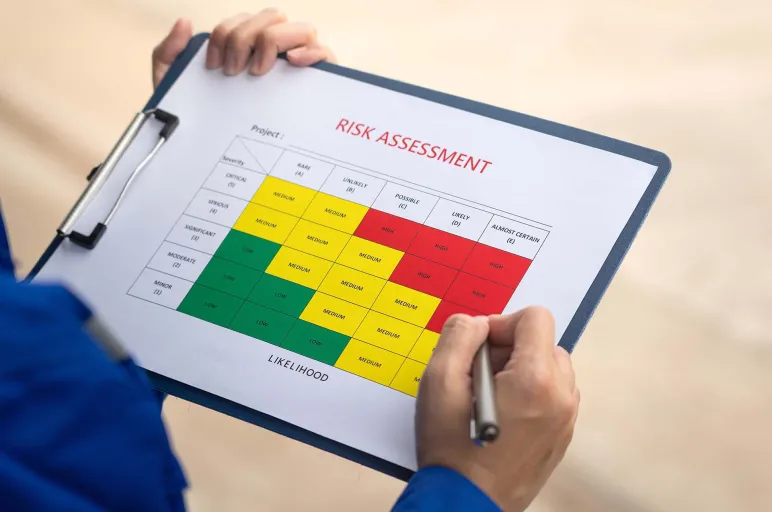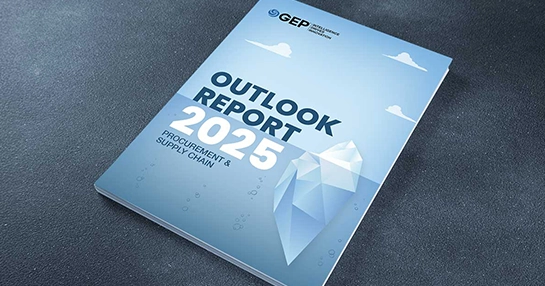
Stop Guessing on Tariffs—Automate Vendor Risk Assessment Before It’s Too Late
- Traditional methods of data collection and analysis cannot accurately assess vendor risks in today’s business landscape.
- Automated vendor risk assessment leverages AI and data analytics to evaluate vendor risks based on predefined criteria.
- Real-time data feeds help continuously monitor vendor performance and financial health.
May 02, 2025 | Risk Management 4 minutes read
Procurement professionals know how to effectively deal with vendors. They adopt a structured approach to managing, as well as enhancing vendor performance. Despite these mechanisms in place, they often face unforeseen supply disruptions. Or they find that sub-standard goods have been delivered.
Now, amid the tariff turmoil, there is a risk of prolonged disruptions in supply, especially from vendors based in other regions.
Perhaps, some of the vendors pose greater risks than others. They may increase prices suddenly without settling for negotiations. Or they may not be able to deliver goods on time.
The question now is: How can procurement precisely anticipate these vendor risks? Is there a way to assess their impact and prepare in advance?
Let’s find out.
What is Automated Vendor Risk Assessment?
Automated vendor risk assessment uses software tools, artificial intelligence (AI) and data analytics to evaluate potential vendors based on predefined criteria. These systems analyze vendors’ financial stability, compliance records, cybersecurity practices, and operational performance.
Unlike traditional methods, automation minimizes human bias and ensures consistent evaluations across vendors.
Why the Process Needs Automation
Businesses often have a large pool of vendors, spread across different regions. These vendors may be suppliers to multiple businesses and industries. A specific organization may or may not be their top priority.
Now when procurement relies on manual risk management methods that use spreadsheets, emails or periodic audits, it has to invest a lot of time to collect vendor data from multiple sources and then analyze this data.
Procurement may need to chase vendors multiple times to get their responses. Also, with human error creeping in, manual assessments do not depict a clear picture. When auditors ask for vendor risk documentation, procurement has to go back and forth on emails and folders.
Given today’s uncertain geopolitical and economic environment, it is nearly impossible for procurement to accurately identify vendor risks using traditional methods. Amid such an uncertain environment, it must leverage advanced technology that can quickly assess risks associated with multiple vendors.
By automating vendor risk assessment, procurement can:
- Access real-time data feeds to continuously monitor vendor performance, financial health, and compliance status.
- Leverage standardized algorithms to accurately detect red flags in vendor risk profiles such as inconsistent financials.
- Ensure compliance with internal policies and external regulations to reduce legal risks.
- Handle a large volume of vendor assessments with ease and without compromising quality
- Proactively monitor and update vendor risk profiles, unlike static annual reviews.
Confused How Tariffs Will Impact Your Business?
Understand tariff implications and strategies to prepare
How Automated Vendor Risk Assessment Works
Automated vendor risk management is a structured, intelligent system that simplifies risk management. Here is a summary of how it works:
1. Vendor Onboarding and Data Collection
- Vendors login to a self-service portal where they submit necessary documents, certifications and compliance forms.
- AI-driven questionnaires dynamically adjust based on vendor type and risk level, eliminating irrelevant questions.
- The system validates documents and checks for missing details.
2. Risk Assessment and Scoring
- The platform analyzes vendor data using predefined risk criteria such as financial health, past performance, etc.
- Vendors get a risk score, such as low, medium, or high, helping procurement prioritize due diligence.
- Third-party data integrations such as cybersecurity ratings enrich vendor profiles with real-time insights.
3. Continuous Monitoring
- Instead of periodic reviews, the system continuously tracks vendor risks based on news alerts, financial breaches and regulatory changes.
- The system sends automated alerts if a vendor’s risk score changes, allowing proactive action.
4. Compliance and audit management
- The system maintains a compliance calendar, tracking deadlines for certifications, insurance renewals, and audits.
- It sends automated reminders to ensure no critical dates are missed.
- Audit trails document every interaction, making compliance reporting effortless.
5. Reporting and Decision-Making
- The system displays vendor risk profile, performance trends and compliance on customizable dashboards.
- Stakeholders can generate automated reports for auditors or leadership with a single click.
Think AI is All About Technology? It’s Also About Building Agile Supply Chains
Learn why building an agile supply chain is key to winning the AI race
Stay Ahead of Emerging Vendor Risks
The business environment today is highly volatile. Geopolitical conflicts, trade wars and economic uncertainty have made it imperative for businesses to build a robust supply chain network . In this process, they must carefully evaluate their suppliers, especially those who deliver critical materials.
With AI-powered procurement technology, businesses can ace vendor risk assessment. Not only can they proactively identify risks associated with multiple vendors, but they can use the analysis to make data-driven decisions. By detecting potential vendor risks early, they can switch to their plan B and mitigate the impact on business operations.
Learn how GEP’s AI-powered vendor management software can help you stay ahead of vendor risks – both ongoing and emerging.



